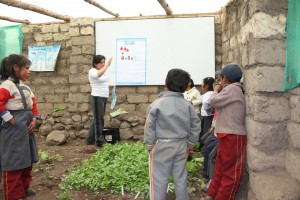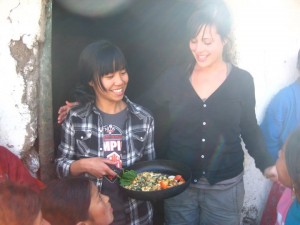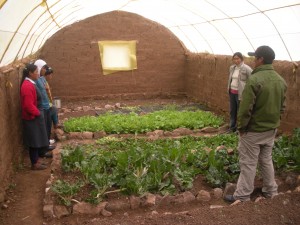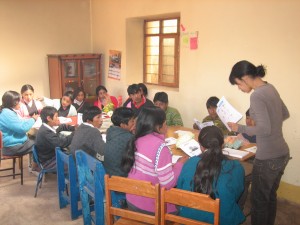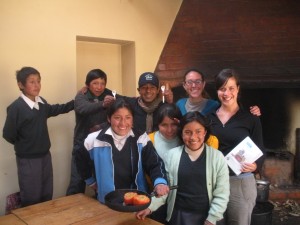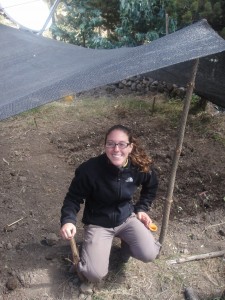Throughout the summer, our Agriculture Team spent a lot of time visiting the greenhouses we built last year in Poques and Pampacorral. Our ongoing goal is to understand how our alternative curriculum manifests itself outside of the designated greenhouse workdays. It has been interesting to learn about the innovative ways the information is transferred to younger students who do not work directly with Ruben.
In Pampacorral I was fortunate enough to experience one such approach. While working with Ruben and the 6th graders in the greenhouse, one of the teachers of a much younger group utilized the plants to teach an interactive, basic math lesson on the greenhouse whiteboard. Her approach highlighted the importance of familiarizing all the school’s students with at least the names of vegetables from a young age. Just pointing out the names of the vegetables and applying them in a lesson plan unrelated to basic cultivation and nutrition struck me as odd at first. Initially, I dismissed the lesson approach as insignificant.
In hindsight I see the genius in this approach: even a basic introduction at such a young age will make vegetable cultivation and consumption an accepted norm, something the younger students will expect to have at school in the coming years. This generation of students is growing up with a privilege that many of their parents and even the older greenhouse participants never had. I realized that the greenhouse is more than a vegetable growing structure. It is a tool to be used in innovative ways from a basic math tool to a laboratory for teaching technical growing techniques.
Basic project introduction like this lesson is the key to changing mindsets by instilling an early awareness of the importance of vegetable cultivation and consumption. It helps to speed up acceptance and buy in from a younger age than many of us had initially envisioned. In the coming years these younger students will begin to learn the technical skills that may ultimately be utilized for community and regional expansion. Hopefully as this next generation of students grows up greenhouses will become a norm rather than an exciting and foreign concept at schools. ~Kat
